Abstract
Four rhesus monkeys were tested for preferences within the wavelength and line-tilt dimensions. In the case of wavelength, the response panel was back-illuminated by light of one of the following wavelengths, presented in a random manner: 470, 525, 580, and 635 nm. Similarly, the line-tilt dimension was studied, by presenting a 5 cm by 0.3 cm black bar tilted at 0, 30, 60, or 90 degrees. No preferences were found within this latter dimension; in contrast, marked wavelength preferences existed, the order of preference being 470 (most preferred), 525, 580, and 635 nm (least preferred). These response preferences were resistant to behavioral manipulation; the number of responses to blue and to red in extinction was about equal when red was used as the training stimulus, but vastly different following training on blue. These results indicate that such response preferences must be taken into account in the design of a wide variety of experiments.
Keywords: preferences, wavelength, line-tilt, panel press, monkeys (Macaca mulatta)
Full text
PDF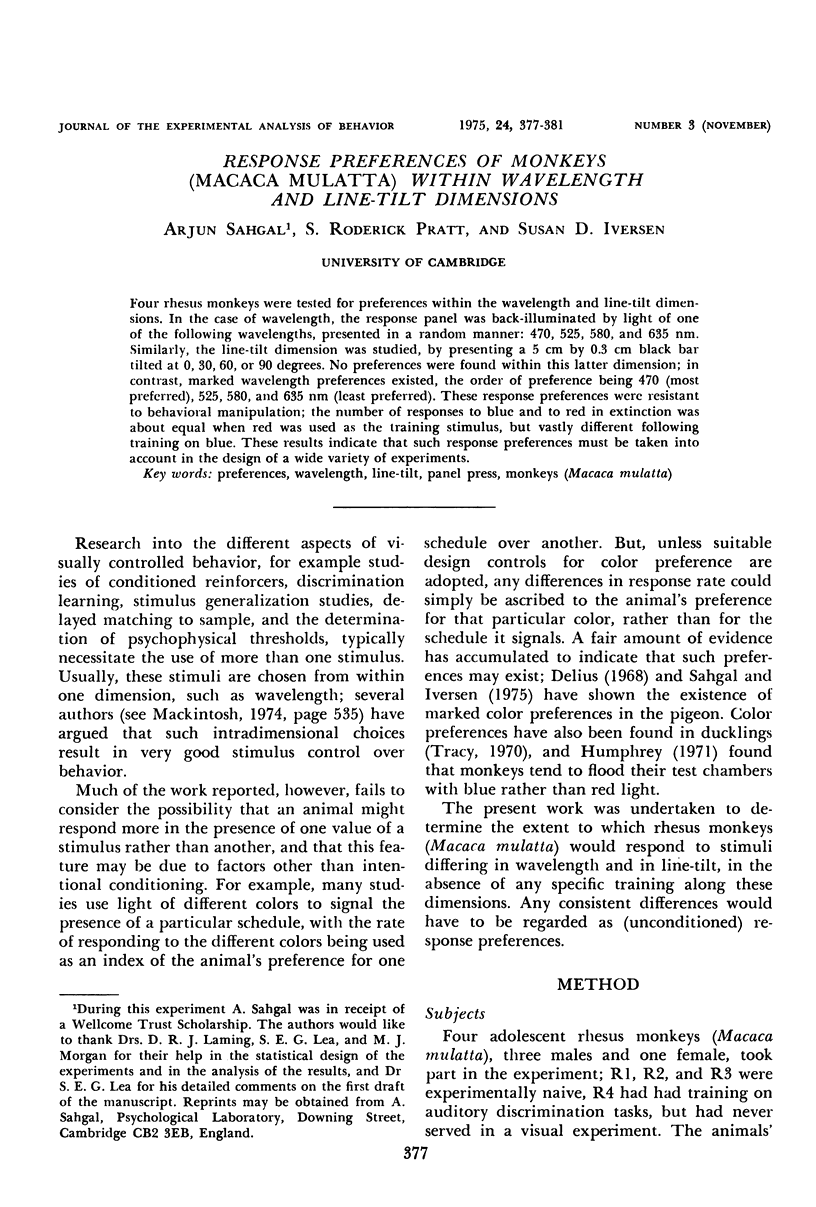
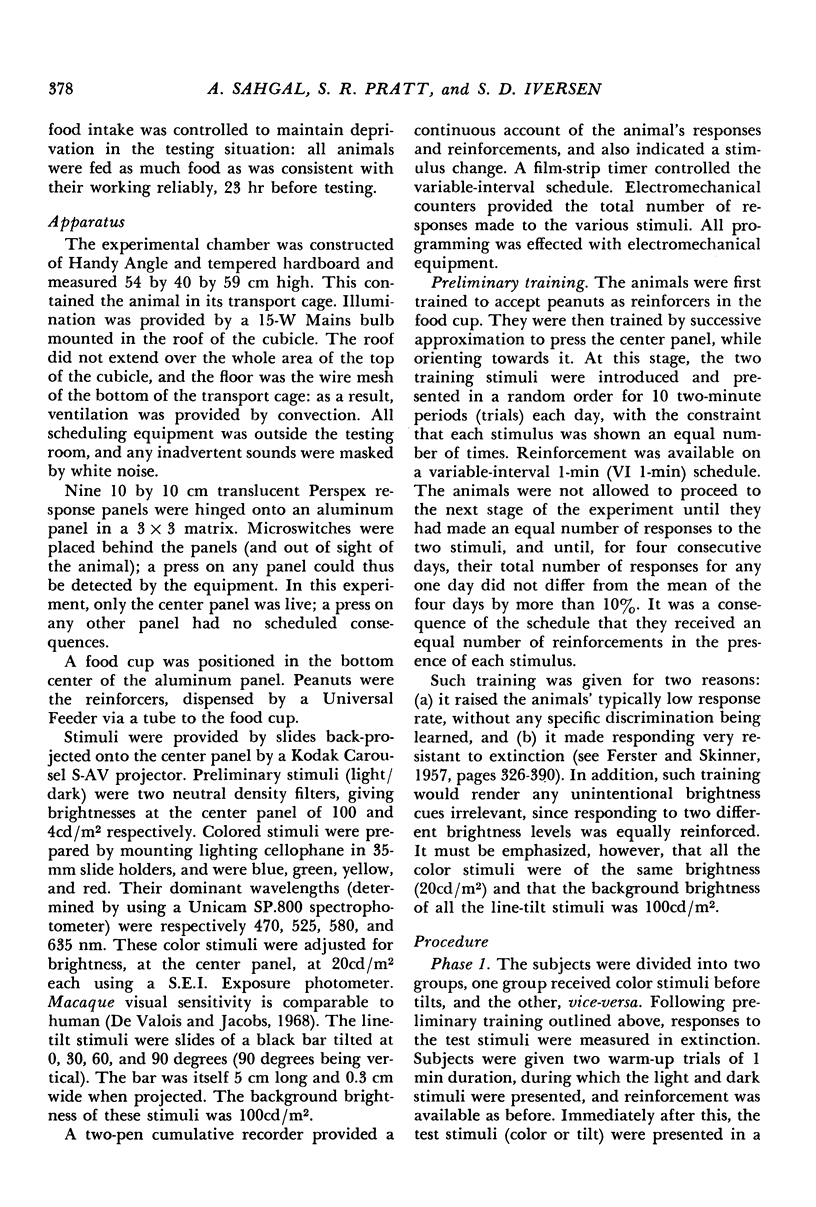
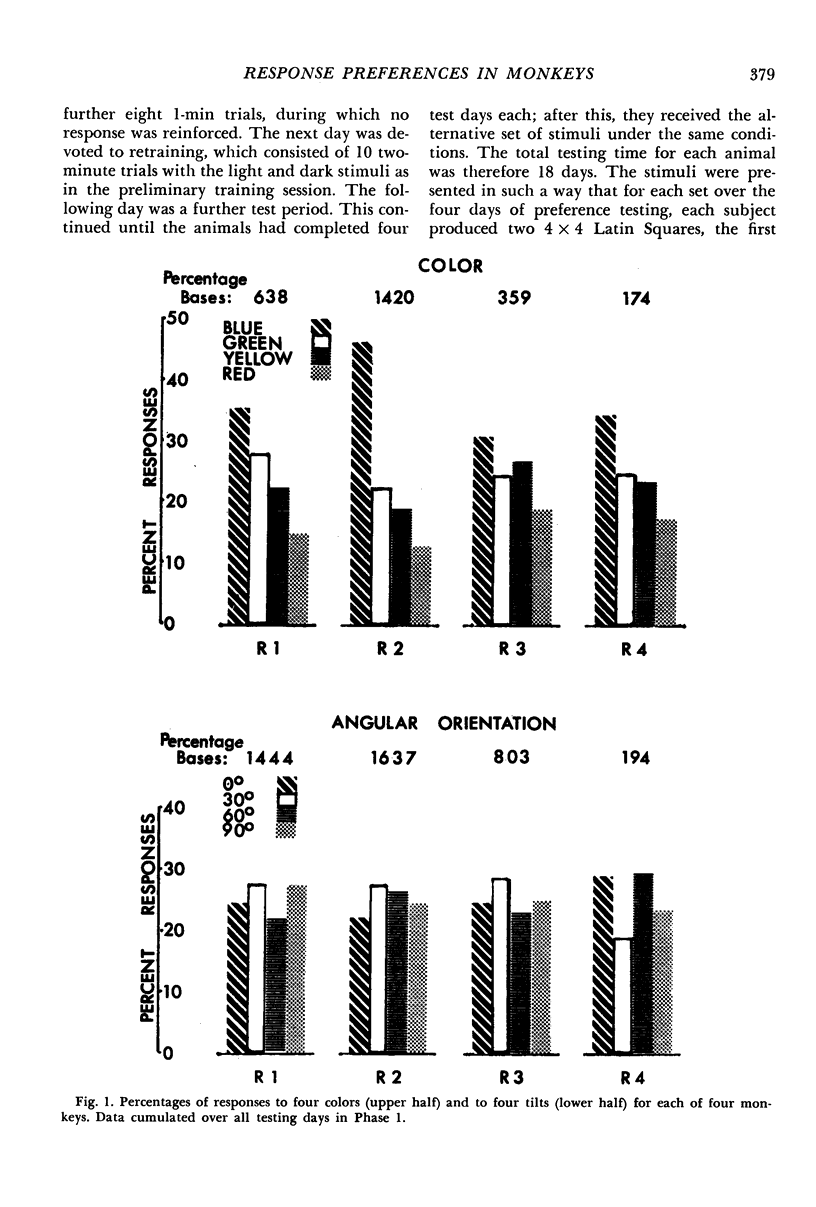
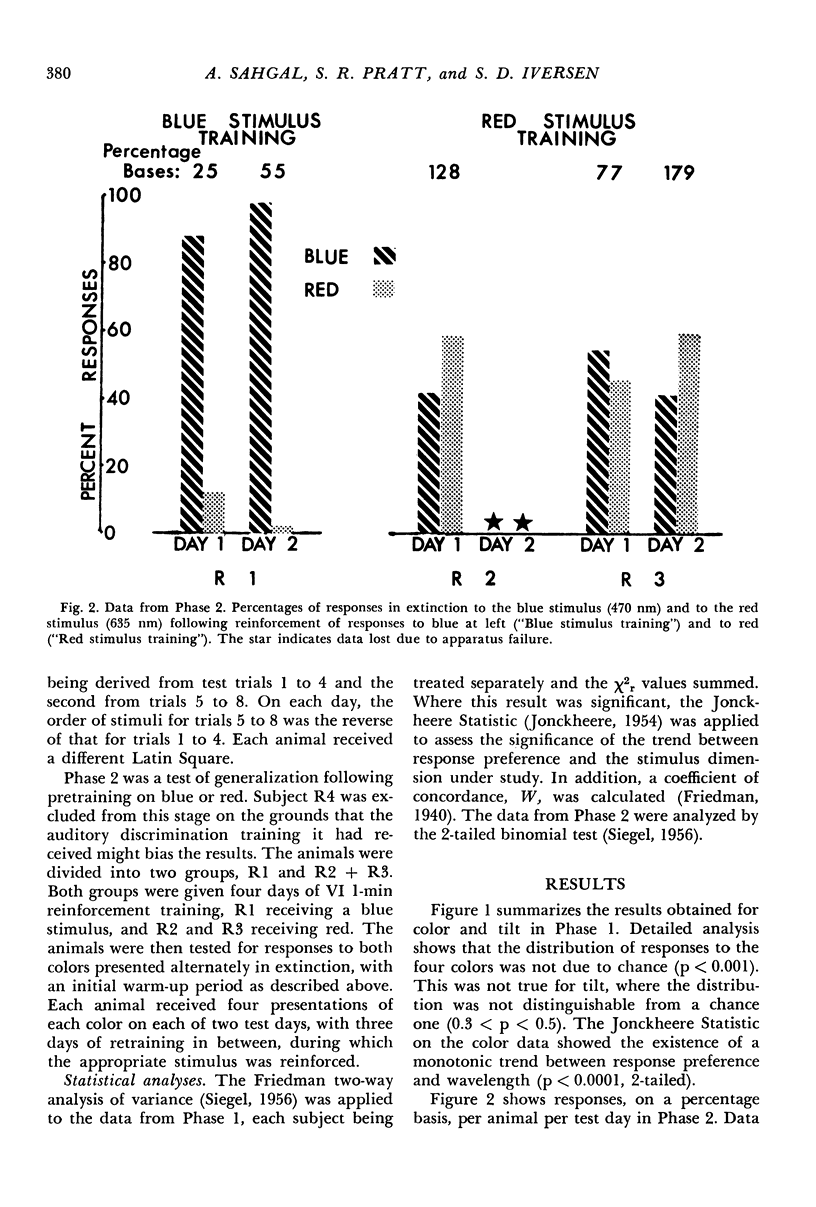
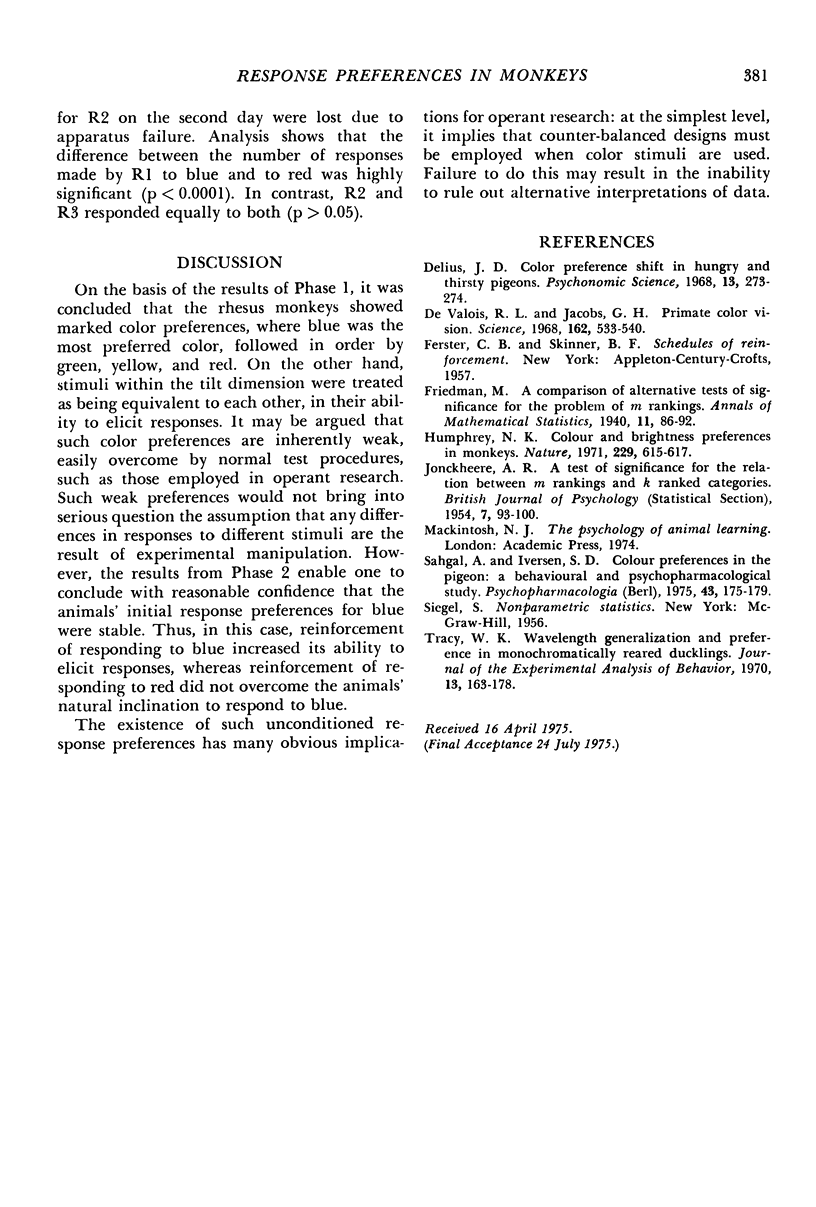
Selected References
These references are in PubMed. This may not be the complete list of references from this article.
- De Valois R. L., Jacobs G. H. Primate color vision. Science. 1968 Nov 1;162(3853):533–540. doi: 10.1126/science.162.3853.533. [DOI] [PubMed] [Google Scholar]
- Humphrey N. Colour and brightness preferences in monkeys. Nature. 1971 Feb 26;229(5287):615–617. doi: 10.1038/229615a0. [DOI] [PubMed] [Google Scholar]
- Sahgal A., Iversen S. D. Colour preferences in the pigeon: a behavioural and psychopharmacological study. Psychopharmacologia. 1975 Aug 21;43(2):175–179. doi: 10.1007/BF00421021. [DOI] [PubMed] [Google Scholar]
- Tracy W. K. Wavelength generalization and preference in monochromatically reared ducklings. J Exp Anal Behav. 1970 Mar;13(2):163–178. doi: 10.1901/jeab.1970.13-163. [DOI] [PMC free article] [PubMed] [Google Scholar]


